Matter Beam Riders: Spaceships without Rockets
Introducing a series of Matter Beam Rider articles on realistic space travel using known technology, invented by Forrest Bishop.
Forrest Bishop, January 10, 2025
In the popular and scientific imagination there are only two ways for Man to voyage to the other worlds, either by riding a real rocket ship or by riding some fictional woo. In the more atmospheric orbits they speak of sails & lasers, elevators, mass drivers, tethers, cables, and the other things to which I’ve also made some contributions.
I have done a considerable amount of pioneering work on Matter Beam Riders over the years, most of which is not well known. Decades later and many of these ideas are still as fresh as today. They have not been superseded. As far as I know, they have not even been equaled in all this time. Some of it has been erased from the internet. Please leave a comment if you think otherwise.
In the course of revisiting this body of work, I’ve come up with a bunch of new things, as usually happens when I review my old projects. These will be presented in the different articles of this series. If you like hearing all about the latest greatest don’t forget to hit that like & subscribe.

Unlike a rocket and a car, a sailing ship and a Matter Beam Rider are not burdened by the need to carry their own fuel. For the original ship sailing the World Ocean, she draws her inspiration from the wind. As there is no wind that powerful in outer space, some other force has to be harnessed to drive the spaceship forward.
Throw a metal plate up into the sky. Now shoot at it with a machine gun. As long as the bullets can stay on target, they can move the plate up, down, and perhaps sideways without letting it fall down. This is the basic idea of a Matter Beam Rider; it is as simple in principle, and as complex in practice, as a Viking or rocket ship.
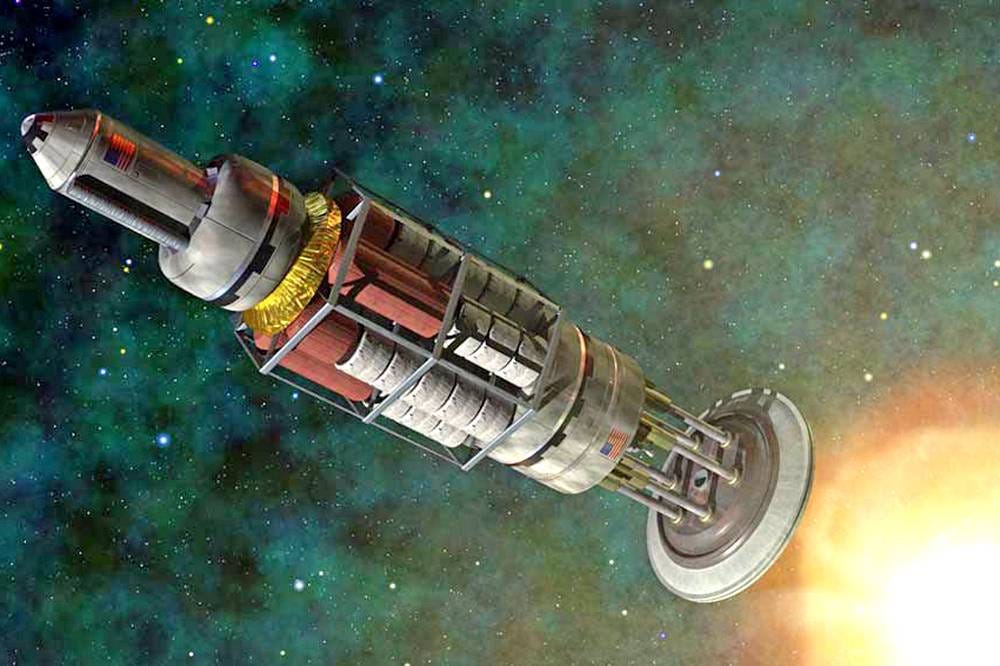
The “machine gun”, or Matter Beam Generator, which drives the Matter Beam Rider can take on many forms. Maybe it’s an actual machine gun, or an astronaut throwing his fastball rocks at an errant flying saucer. Maybe it’s a high-speed rotating tube made of carbon nanotubes, or a giant crossbow floating along in outer space.
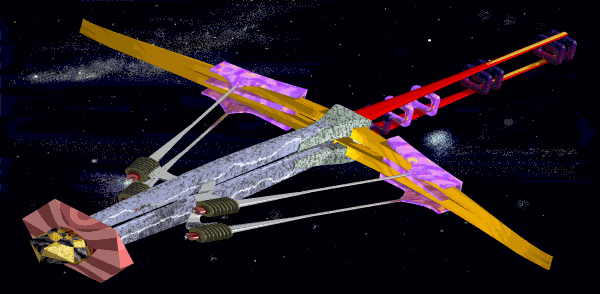

One attractive candidate for the Beam Generator is the Mass Driver, or Coil Gun. These versatile machines can accurately shoot their projectiles at very low to very high speeds, depending on what the target requires at the time. The projectiles might weigh a few grams, or many tonnes. The rate of fire can range from once per eon to many times per second, though a higher rate of fire is much easier to accomplish when each projectile is relatively low mass, a fact I use in my South Pole Accelerator design. The higher the muzzle velocity, either the longer the Mass Driver needs to be or the harder it has to push to accelerate.
This video came out on Jan 9, 2025, just as I was finishing up this article. The Mass Drivers presented are massive machines, designed to launch an entire spacecraft, which is not at all the concept presented here. A machine that launches a 10-tonne payload is 1,000 times larger- the magnets, the structure, and the power supplies- than a machine that launches a 10-kilogram payload. It’s also much more expensive. But the smaller projectile would not be able to make it into space if it were launched horizontally or at an angle as proposed elsewhere.
My Microscale Light Sail Beam concept doesn’t need much length, the expendable matter beam made of of light sails is accelerated over long distances by the photonic pressure from the Sun or a laser. Another candidate for Matter Beam Riders and nearly-continuous matter beams is my Linear Electrostatic Motor, or Dielectric Drive, used in my Starseed Launcher design. It also has to be very long, like a Mass Driver, in order to build up speed.
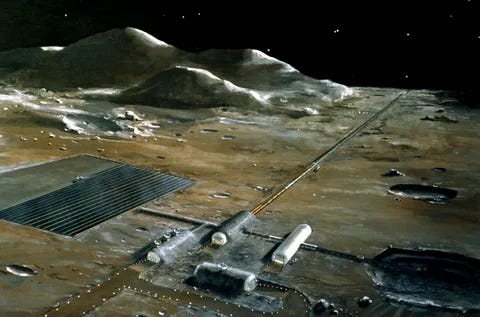
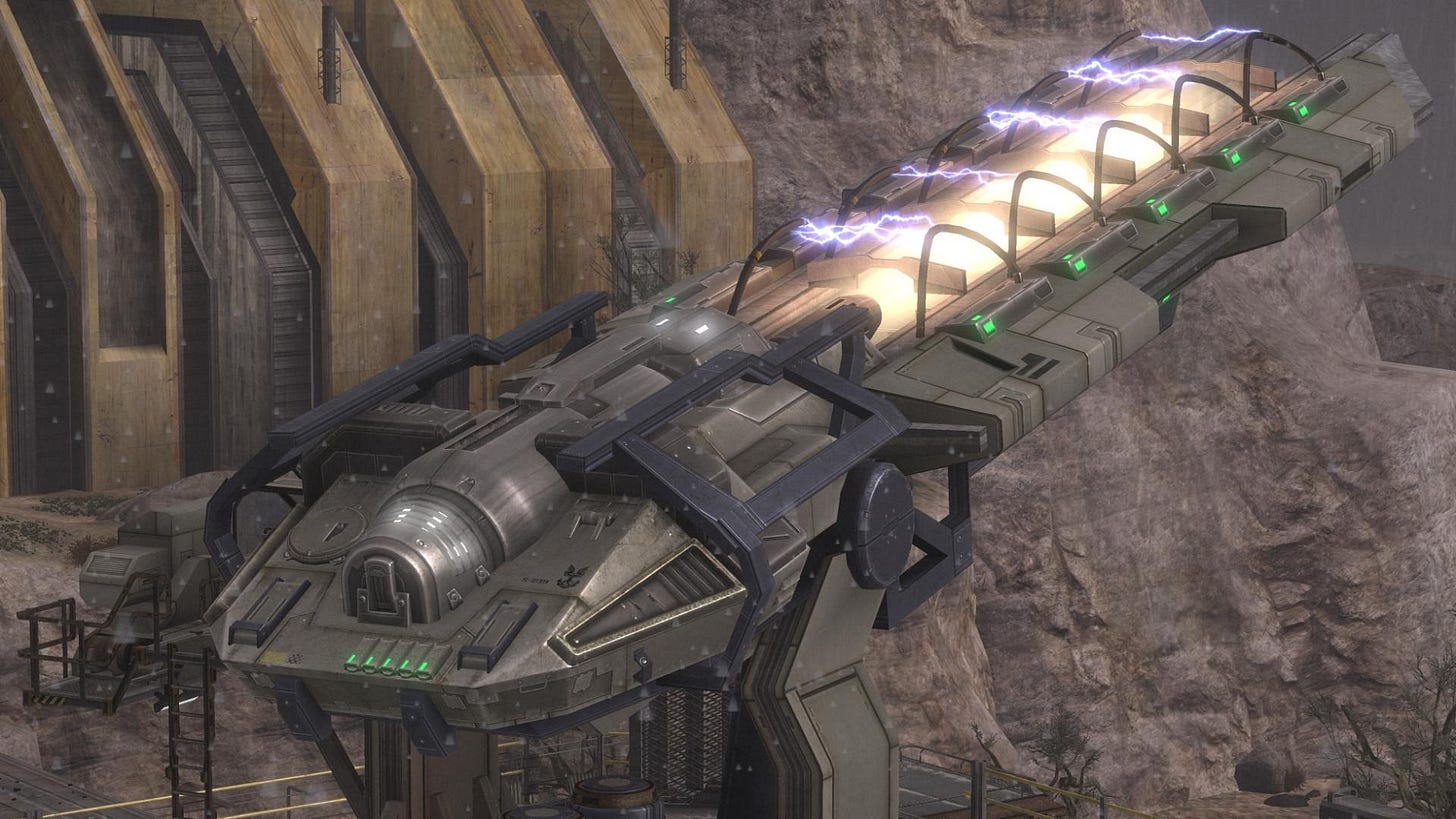
The Matter Beam Rider has two enormous advantages over the traditional rocket ship. Since it does not have to carry along and accelerate massive amounts of fuel to be used later on, the total amount of mass and energy expended is far less for a given payload size and final coasting speed. Most of the fuel a rocket carries is used to accelerate the fuel itself, an exponentially increasing problem with speed. The mass used to accelerate an MBR increases roughly linearly with final speed while the total energy needed increases much less than the square of the coasting speed, because most of the energy is expended at lower speeds.
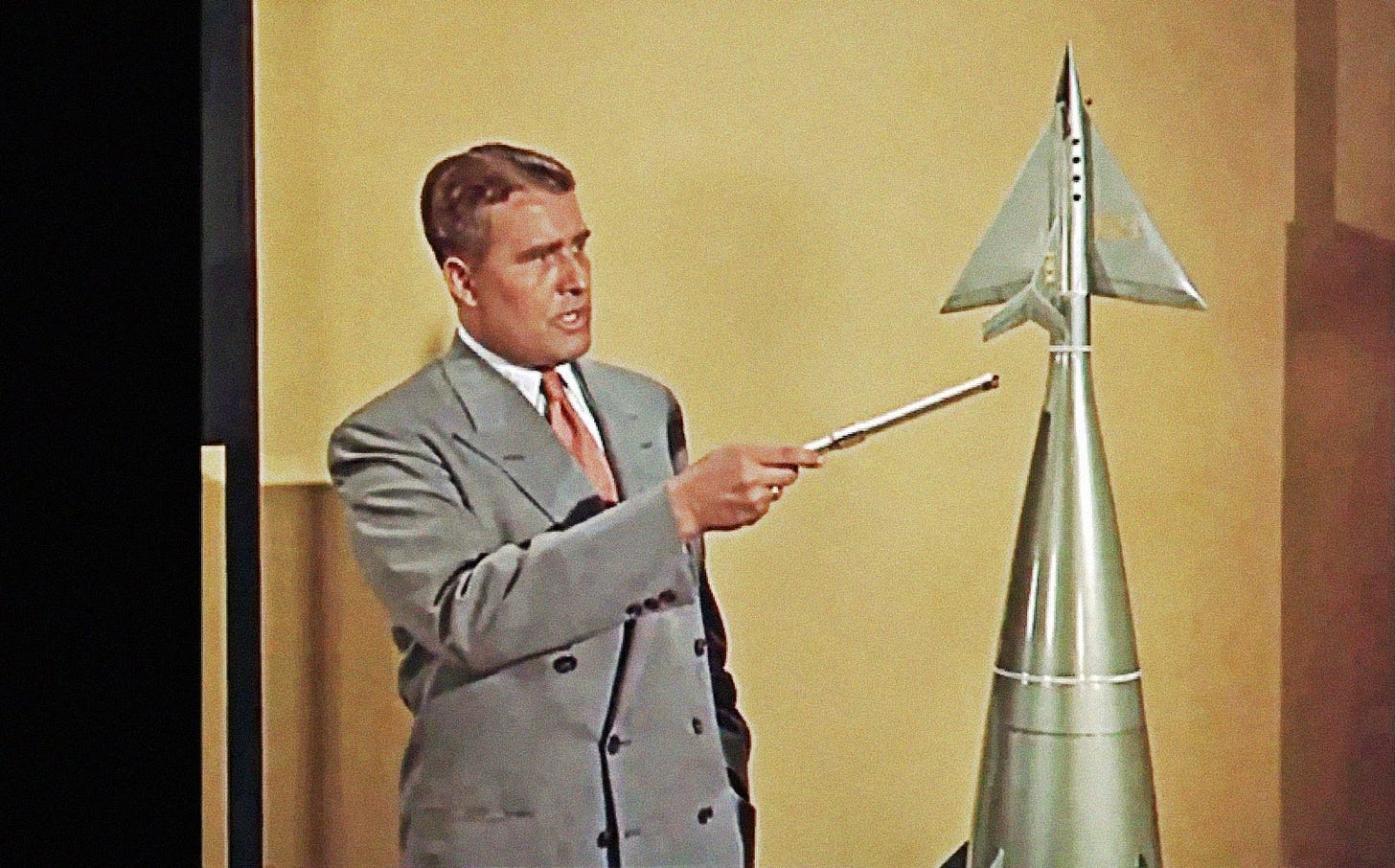
Another great advantage is the reusability of the capital equipment. It doesn’t shed expensive lower rocket stages along the way. Once the Beam Generator has finished boosting one ship onto its journey it is available to boost another one. It is the port in space from which the Matter Beam Rider departs, and can also be the port to which it arrives.
Consistency from the Beam Generator is more important than absolute accuracy. Each shot should come in right behind the previous one, so the spaceship doesn’t have to move around sideways to catch them all. For long distances it may be necessary to have some rudimentary guidance and control aboard each projectile to keep them in line with each other. The more complicated the individual projectile, the more expensive and less attractive it becomes.
The spaceship itself might look like a simplified version of the Orion Project atomic rocket ship, or it might use a different kind of bumper. Maybe the bumper has the ability to continuously rebuild itself. The projectiles that hit it don’t have to land in big solid chunks which could destroy the ship. Maybe they are launched as a stream of very small particles, or maybe they explode into smaller pieces just before impact. The smaller and more numerous the particles, the less the shock at impact. In the limit of a continuous stream, the elaborate shock absorbers aren’t needed.
Ideally, the projectiles would bounce off of the pusher plate as if it were made of rubber, which can double the performance, the oomph per hit. Maybe they are exploded, then ionized as they merge with a captured plasma in a magnetic nozzle just aft of the solid bumper. The bounce of the rubble or the directing of the plasma gives the ship some ability to broad reach.
A few of the articles in this Matter Beam Riders series are introduced below-
Matter Beam Riders: Spaceships without Rockets
Matter Beam Riders: South Pole Accelerator
Matter Beam Riders: InterPlanetary Mass Driver
Matter Beam Riders: Interworld Rapid Transit System
Matter Beam Riders: Microscale Light Sail Beam
Matter Beam Riders: Light Sail Beam Generator
Matter Beam Riders: Starseed Launcher
These articles form the bones of a narrative structure, a story of an age in when Man gathered materials from the four corners of the Earth, sent them to the bottom of the world, there to throw them across the Solar System, and cast beyond the farthest reaches of the galaxy.
Matter Beam Riders: South Pole Accelerator [ca.1981]
I was reminded of my South Pole Accelerator design when Oreshnik arrived on the scene with its near-vertical drop. I’d like to have other CG animators engaged with projects like this one and that one and maybe that other one too. Write if you are interested.
WE SEE: There is an artificial mountain made of ice in Antarctica, somewhere out near the South Pole. On top of the mountain is a tall tower. At the top of the tower there is a beam of the light of ionized air, pointing straight up into space. The light of the plasma is pulsing like a marquee at several times per second as the brighter spots within it travel upwards, one after another at 25,000 miles per hour through the rarefied atmosphere of the Launch Corridor. The infrasonic rumble can be heard for miles around. The Launch Corridor’s beam of light is so tall it can be seen from almost anywhere in Antarctica…
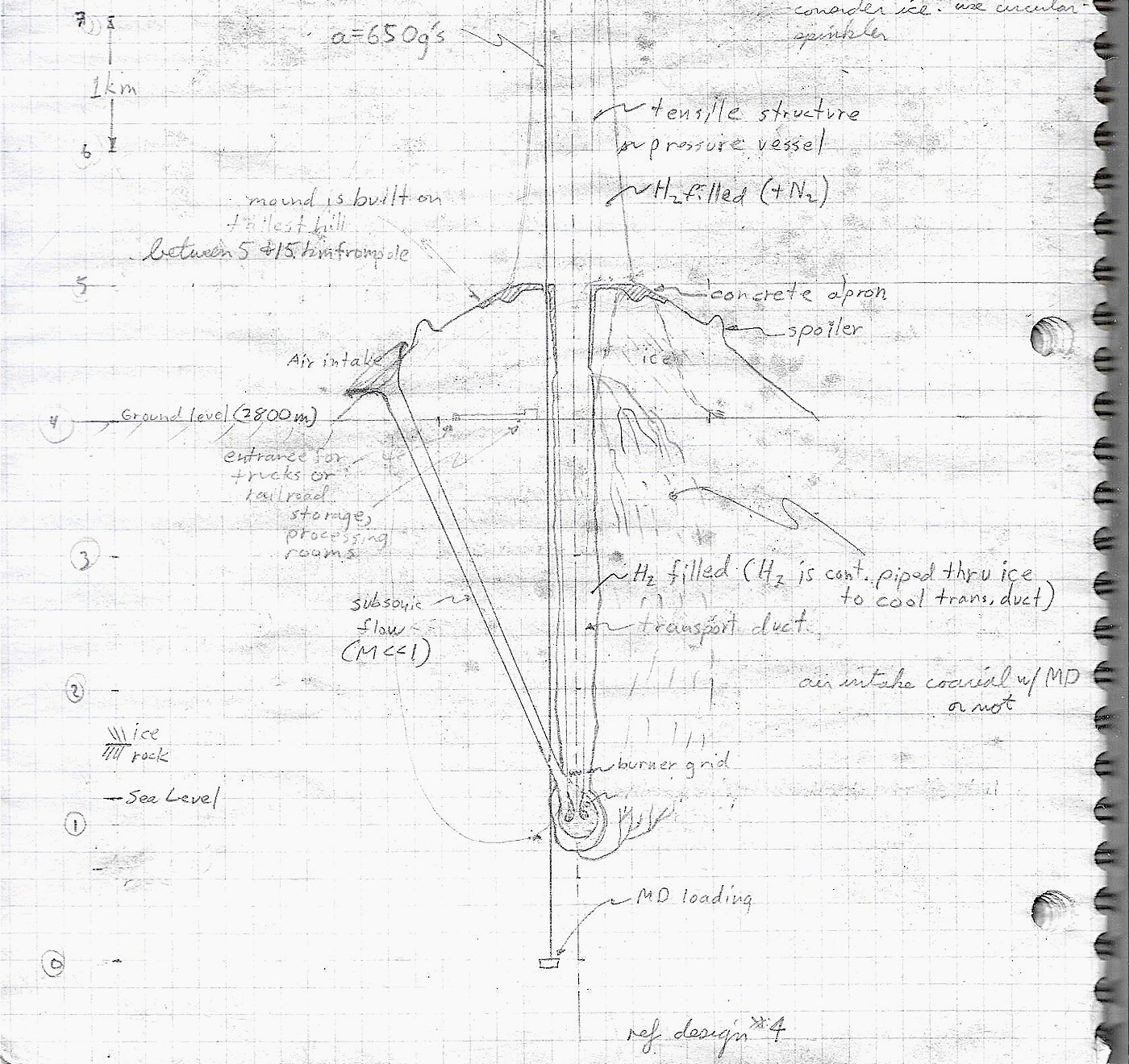
The machine operates continuously, sending the equivalent of thousands of SpaceX Starship payloads out past the Moon, to the edge of the Earth’s sphere of influence, per year. When they get there...
Matter Beam Riders: InterPlanetary Mass Driver [ca. 1979]
The IPMD is a very large electromagnetic machine gun in orbit around the Earth. It’s hundreds of meters long and a few meters wide. Maybe it’s nuclear or solar powered, or receives beamed energy from orbital solar power stations. Maybe it has electric generators powered by the same fuel that otherwise would have filled the giant rocket tanks. It shoots its projectiles at speeds much faster than a bullet, out in the vacuum of space. On an eccentric orbit, it flies out as far away as the Moon, then sweeps back in to hook around the Earth at a few hundred kilometers above the ground…
WE SEE: A machine floating in space between the Earth and the Moon, pointing in the general direction of the Earth, falling towards it. It’s long and thin, truss work on the outside, looks like a cross between a bridge and a gun. Small rockets flare from time to time from the electric power modules dotted along its length. Its generators spool up, idling, waiting for go, projectile magazines in the stern locked and loaded…
CUT TO: A standard-issue spaceship in low orbit swoops around from behind the limb of the Earth. Front end looks like all the rest of them, back end is a stack of circular plates and shock absorbers. It moves across the face of the planet, waiting like a skier for the chairlift…
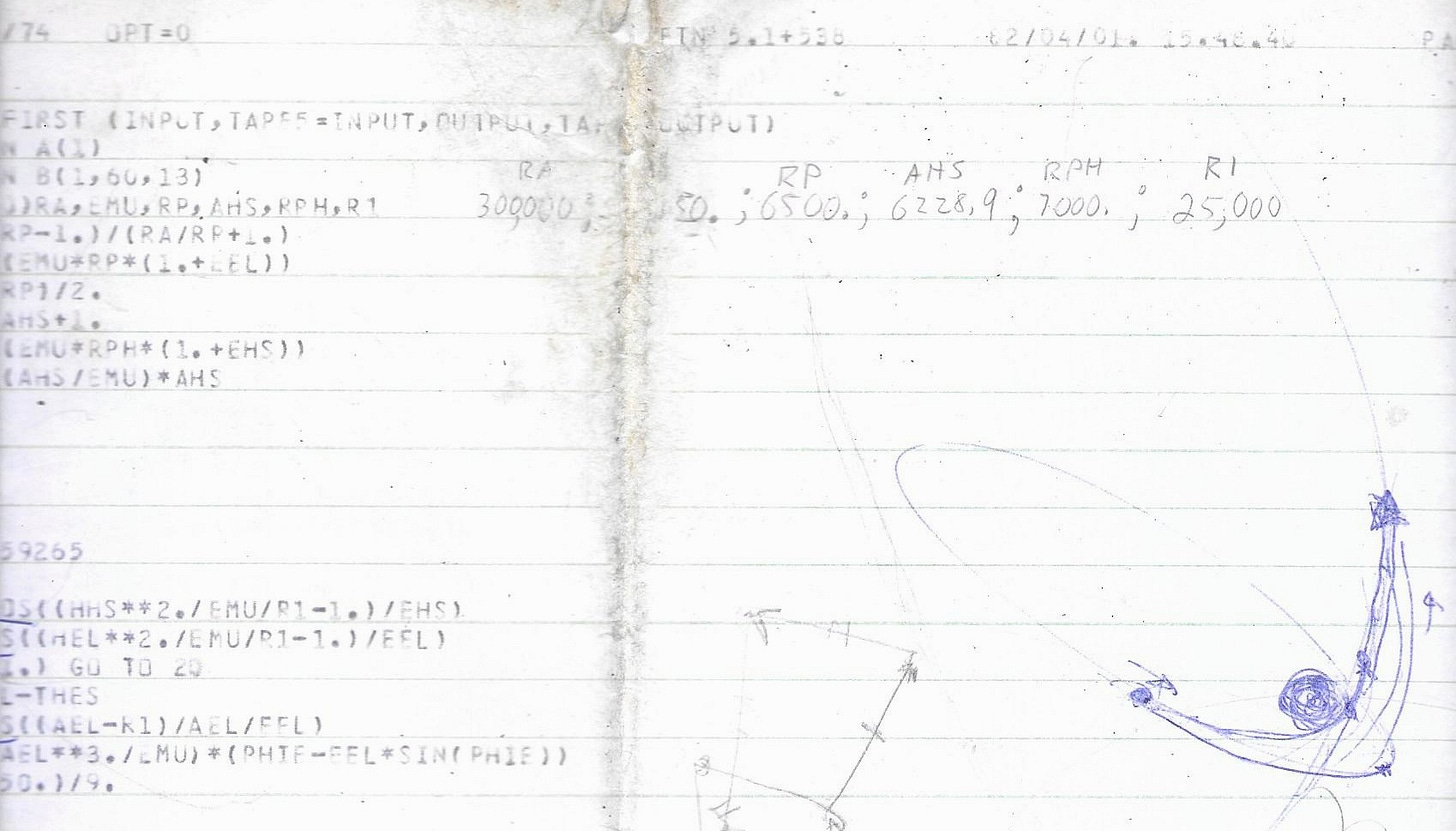
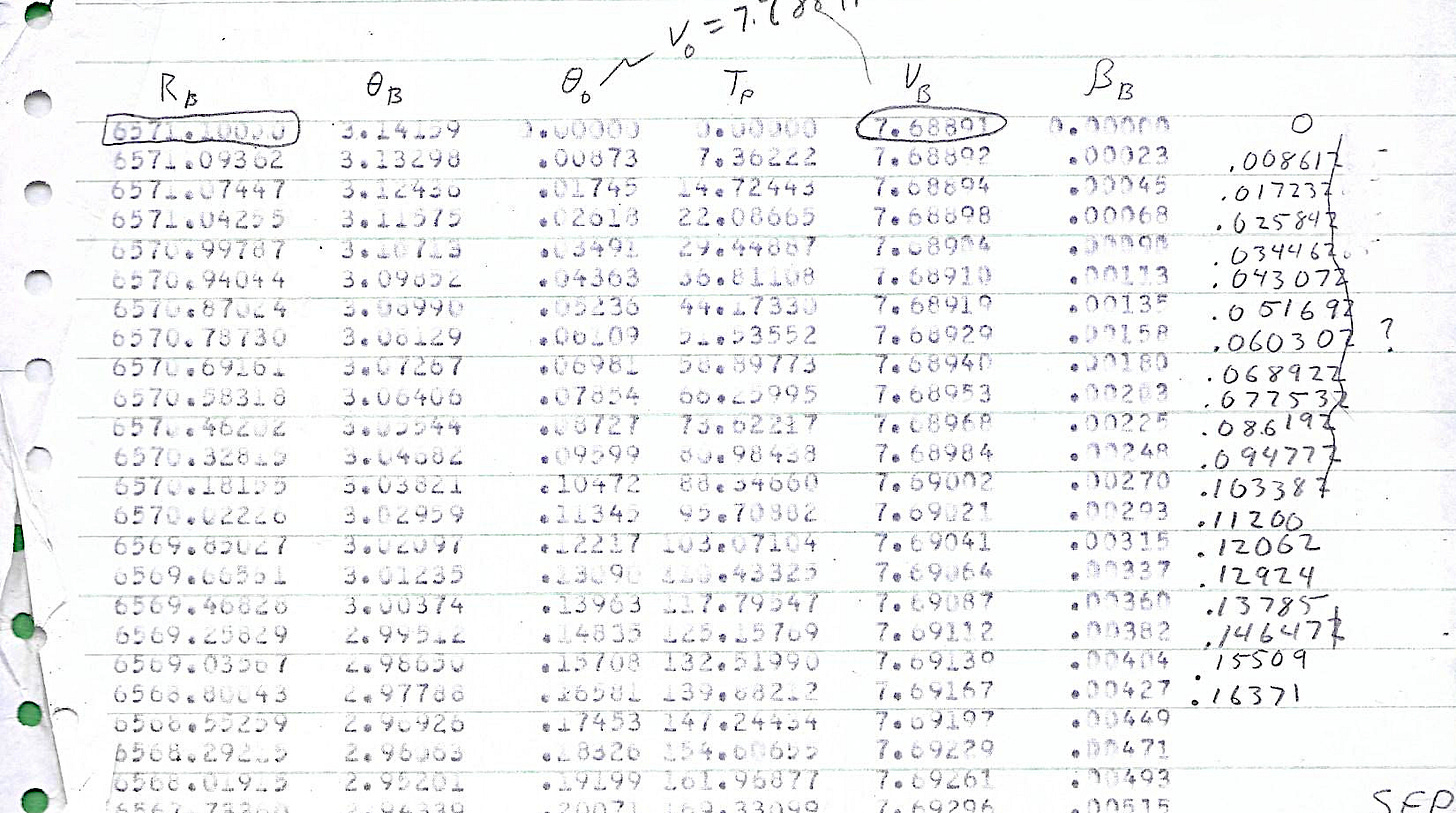
The target in low earth orbit (LEO) is a Matter Beam Rider, a type of spaceship. The ship doesn’t have big fuel tanks like a rocket ship must, instead it’s just a cabin with a shock-absorbing bumper on the back. The little projectiles from the IPMD smash into the rear bumper one after the other. Each hit makes the spaceship go a little bit faster. Enough of these and the ship is moving fast enough to arrive at Mars in a few...
SpaceX is planning to use chemical rockets to go to Mars, an old idea which takes a lot of tanker flights to refuel the outbound ship in low Earth orbit and then return to Earth for a refill. If an IPMD system were launched instead of all the tankers, the capital equipment stays on orbit for future flights and the amount of fuel used for boosting each ship onto a Mars transfer obit is a fraction of what a…
Matter Beam Riders: Interworld Rapid Transit System (IRTS) [ca. 1980-1996]
Upon arriving at Mars there needs to be a way to slow down. It can use its reconfigured bumper as an aerobrake in the usual way but that gets harder to do when the speed is higher. One way to slow down while still far away is to throw little rocks in its path, rocks from the Martian moons. Another way is to have a second IPMD in orbit about Mars, directed at the incoming ship. This machine can also send Matter Beam Riders back to Earth, to the asteroids, and onward. The Sun, other moons, asteroids, and other planets can also have IPMDs or other kinds of Beam Generators on orbit, to form a high-speed transportation network spanning the Solar System…
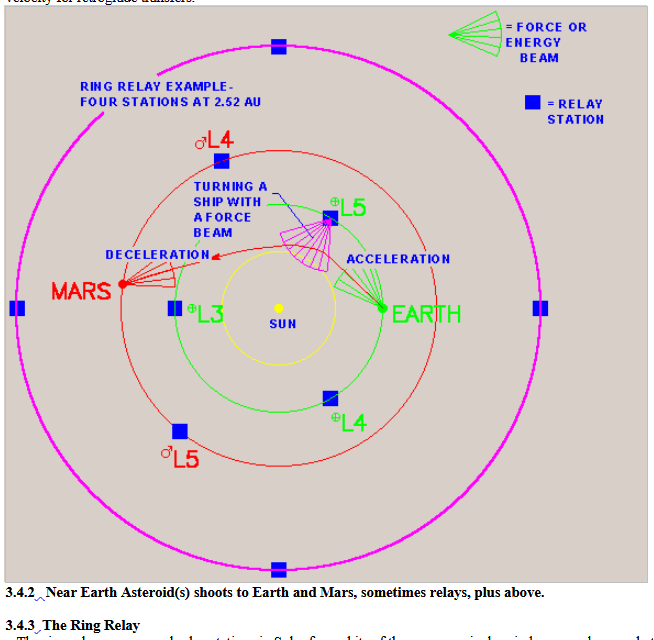
WE SEE: The manned Beam Rider was on a planned month-long trip out to an asteroid mining operation in the Belt, on a high-energy orbit passing by Venus, when something went wrong. The crew decided to divert to Mars. They dial up the Force Beam Generator located out at Earth L5 and request an emergency…
Matter Beam Riders: Microscale Light Sail Beam [ca. 1997]
The idea of pulling a spaceship by the tiny pressure of light on a sail is close to, and descends from, the idea of pulling a ship across the ocean by the pressure of the wind in its sails. Jules Verne, writing ca. 1865, may be the original inventor of the outer space Light Sail. The idea was developed further in the 1920’s by men like rocket pioneer Konstantin Tsiolkovsky. Many different variations of Light Sail spacecraft were introduced by various inventors in the late 20th Century: laser-sails, rotating sails, great big sails, and little ones, too. A solar-sailing competition race to Mars was undertaken, then abandoned. In all of these proposals, a spacecraft is attached to a Light Sail, either a Solar Sail or a Laser Sail, which pulls it along much in the manner of a sailing ship.
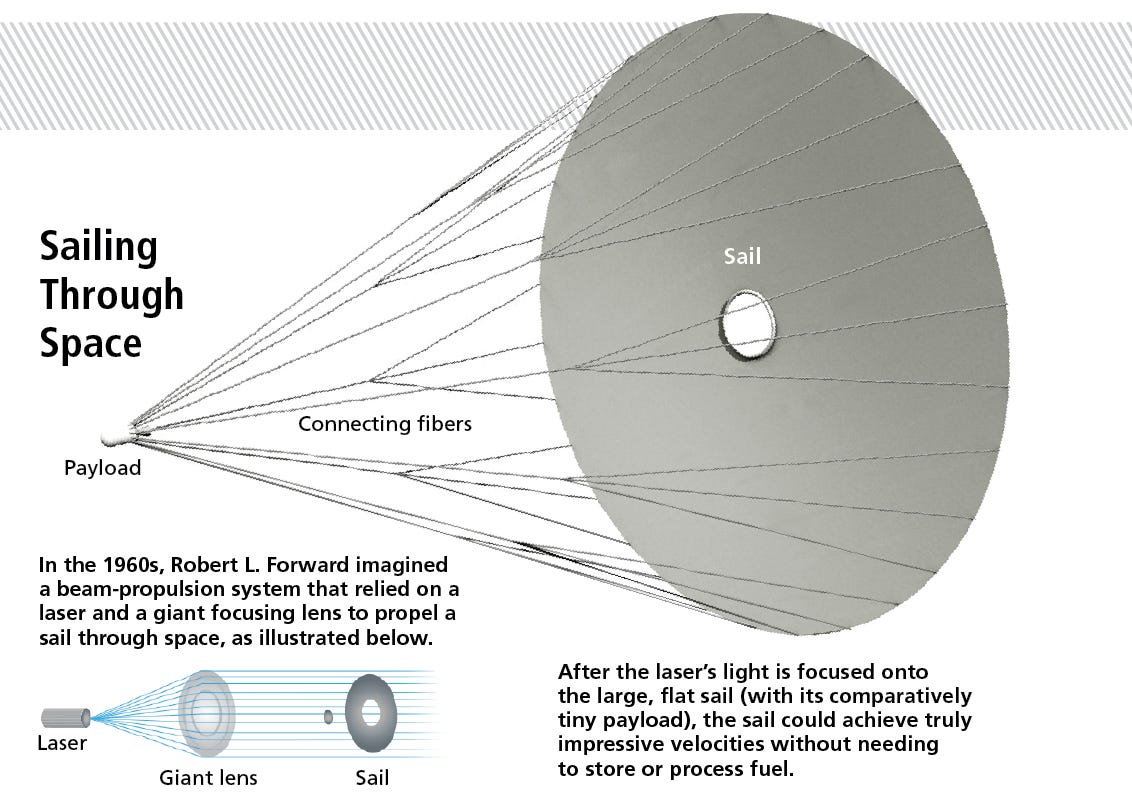
In all of these older proposals the spacecraft is being towed along behind the sail.
The Core Concept of my Light Sail Beam is to relieve the giant Light Sail from the burden of having to drag along a payload in the manner of a sailing ship, and instead to form a matter-propulsion beam composed of little Microscale Light Sails. The little sails don’t tow a ship; they have no payload. This allows them to accelerate to very high speeds using the power of the Sun or a laser. If they can be encouraged to stay in line and form a collimated matter beam, that beam can hit the back of a Matter Beam Rider, pushing it forward.
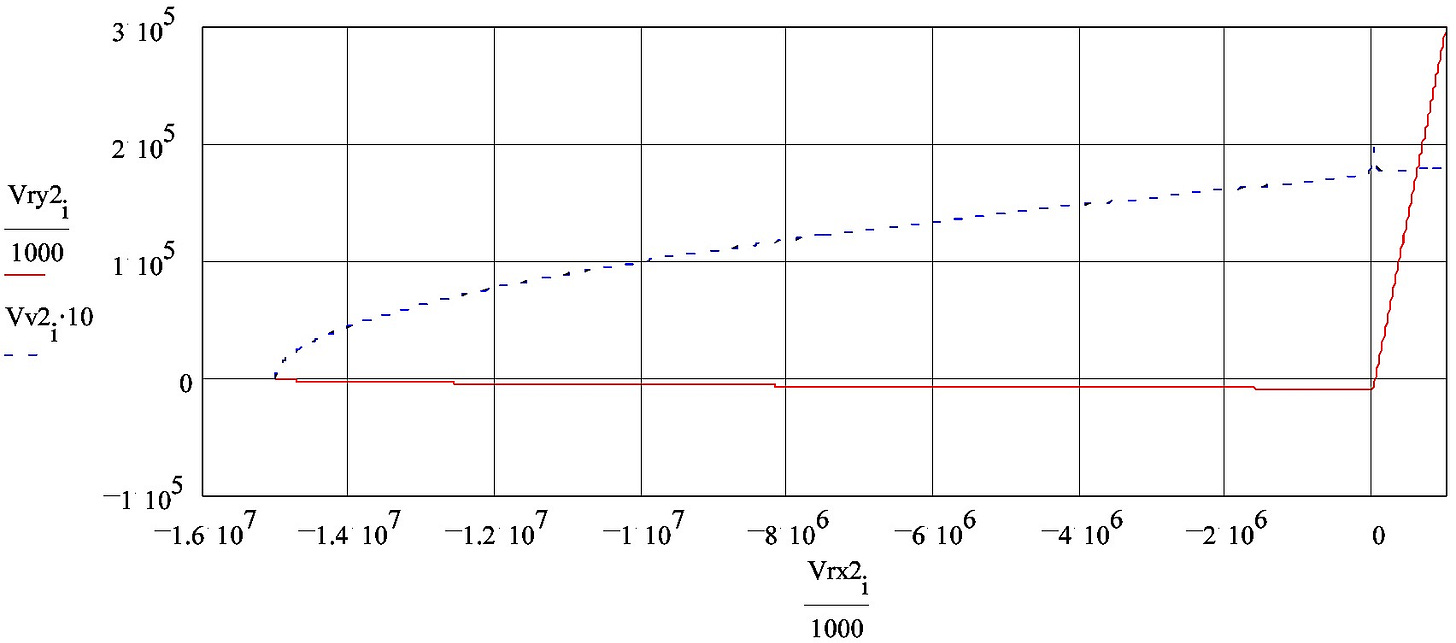
In the image above the little Light Sails are released from a spacecraft in an L1 solar halo orbit, the region where the SOHO hangs out. In this version they get up to 200 km/s (450,000 MPH) as they drop down the gravity well and impact destroy the pusher plate of a Matter Beam Rider in low Earth orbit, similar to the IPMD scenario. Might want to use a staged magnetic-mirror plasma nozzle for this one. That is quite a lot of kinetic energy delivered for the price of shipping the dispenser spacecraft out to solar L1…
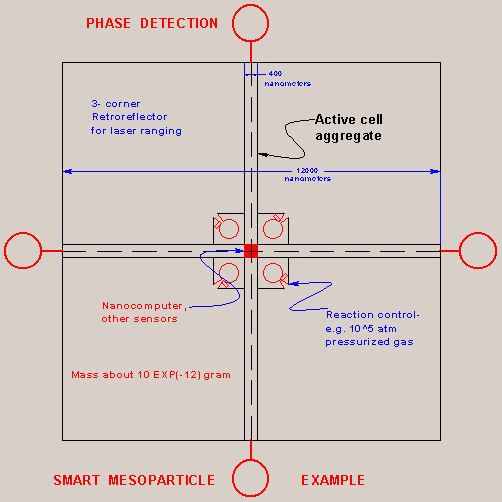
Sure would be nice to be able to manufacture the Microscale Light Sail Beam particles out in space rather than having to ship them all the way from Earth…
Matter Beam Riders: Light Sail Beam Generator [ca. 2000]
“Microscale Light Sails” (MLS) are simultaneously manufactured and launched as a matter-beam from a proposed Lunar facility. Lunar aluminum would be refined for the feedstock of this “Thin Film Beam Generator”.
WE SEE: A mining operation on the Moon, a Matter Beam Generator machine nearby that looks sort of like the old Mass Driver idea from the High Frontier. The machine starts with an array of what look like little rocket engines fed from heated tanks of molten aluminum…

WE SEE: A stream of what looks like glitter shooting out from the business end of the Beam Generator, moving faster than the escape velocity of the Moon…
Several laser-cooling and optical assembly techniques are proposed to construct the MLS at speed while precluding contact with stationary objects. A battery of linear, aluminum-vapor, rocket engines make up the first stage of a two-dimensional version of a “Laser Cooled Thermal Beam”. After a supersonic expansion, the condensing sheets of AlI atoms undergo spontaneous-force and dipole-force mediated cooling, guidance, and compression. The individual, partly condensed sheets are brought together at sufficiently low energy to form the core of the thin film…
MLS-swarms can become either the reaction-mass for a deep space, beam-propulsion transportation network, the constituents of an orbital space-mirror or an interstellar, laser-driven probe, or simply be used as raw building material for outer space structures. One such machine… may manufacture and deploy enough MLS as reaction-mass to drive a few million kilograms per annum from Earth orbit to the outer Solar System. An articulation of the beam generator may manufacture solar cells and other kinds of thin films…
Matter Beam Riders: Starseed Launcher [ca. 1995]
This system launches phalanxes of Shape Shifting interstellar nanoprobes* at some fraction of the speed of light. The probes may be capable of inflight mutual rendezvous, some self repair, and decelerating to orbit the target star system. A method of self-replicating at the new star system is…
*I coined the term “nanoprobe” in the original Starseed article. The Star Trek art director at Paramount picked it up and used it in one of their episodes, afaik. Japanese fellow iirc; he left a very grateful message on my guest book.
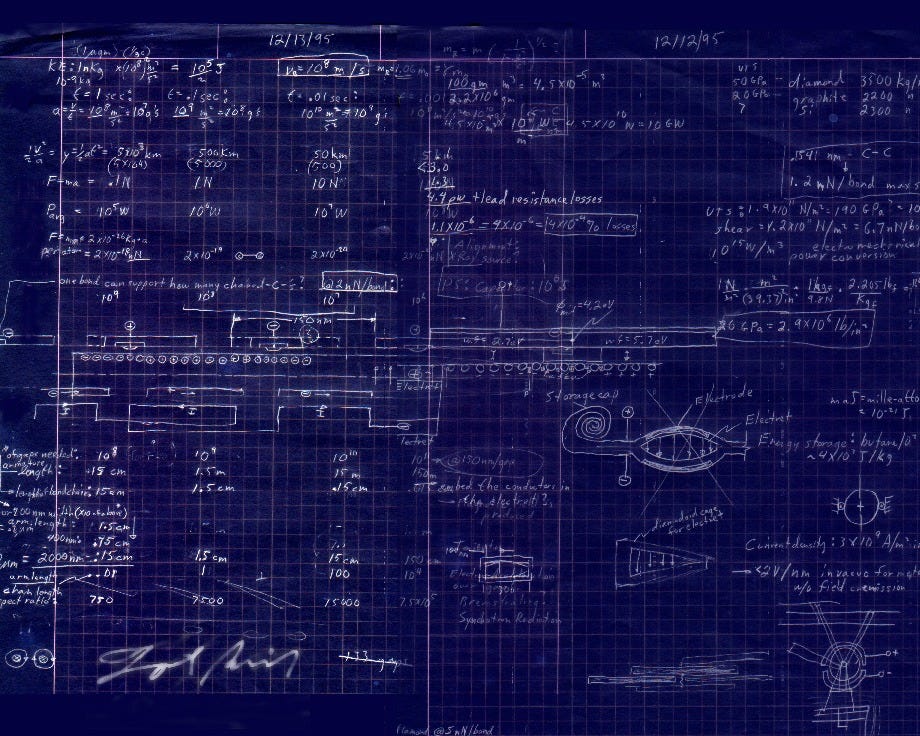
The nanoprobes form the armatures of the launcher, they are composed of nanotech Bishop Cubes and superconducting elements of a structurally compatible design. These conductors are rearranged after launch to form a microwave antenna, then a braking magnetic sail…
The construction of the ~1000 kilometer long launcher "wires" and the nanoprobes requires atomically precise structures (molecular nanotechnology). It would probably have to be stationed somewhere out past Neptune, or maybe in that planet’s L5 region, to avoid perturbations from the other planets…
The energy supply required for each microscopic Starseed projectile is about what is contained in an ordinary charged-up car battery…
The components of the Overtool, a Universal Assembler based on Bishop Cubes, may be included as part of the watermarked payload for self-replication at the target star system, which is the meaning of the name “Starseed”…
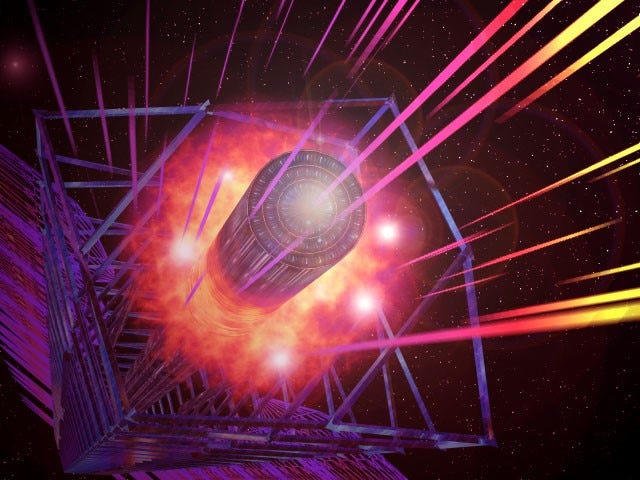
“…we just left Green Land for New Found Land… heading in Leif Erikson’s footsteps… out through the ice belt…”
If you feel like it you can https://buymeacoffee.com/forrestbishop






Instead of trying to send a bunch of mech nanites to try & do an autonomous (from earth management) swarm infrastructure development project in another star system where WE DON'T YET KNOW THE SITUATION THEY WILL HAVE TO DEAL WITH?
Wouldn't it be simpler to write a very information dense, self replicating and self modifying to fit various environments "development code", possibly as some sort of long chain molecule? Ideally using the cheapest and most common elements to ensure any comet or chunk of leftover mass will probably have the required materials, no gold, palladium or whatever less common elements required. It's going to be a very long term project anyhow, best do as many of them as fast as possible, that requires CHEAP manufacture and absolute minimum mass despatched towards any particular system... Not grams of nanites, micrograms of coded molecules, only one or two of which even need to arrive at a place in a star system with raw materials & some solar energy.
Oh wait- WHAT am I made of? WHY are we here? WHO started this odd circus?! Never mind...